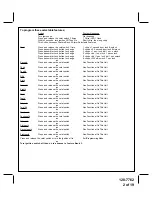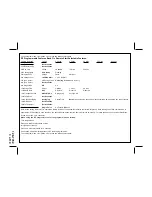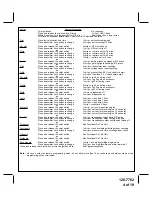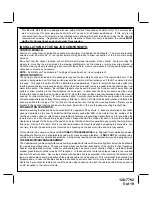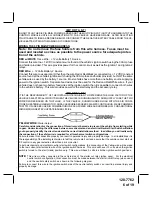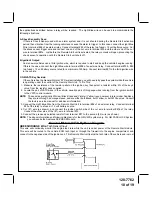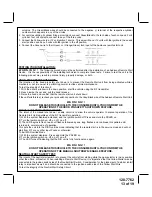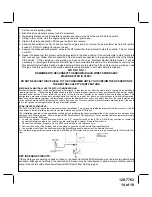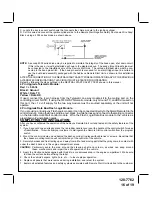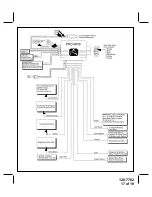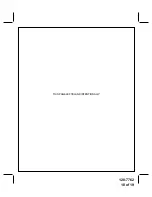
128-7762
6 of 19
I M P O R T A N T !
DO NOT PLUG THE SIX PIN MAIN POWER HARNESS OR THE MULTI PIN INPUT / OUTPUT HARNESS INTO THE
CONTROL MODULE UNTIL ALL CONNECTIONS TO THE VEHICLE HAVE BEEN MADE. AFTER SELECTING
YOUR TARGET WIRES AS DEFINED BELOW, DISCONNECT THE NEGATIVE BATTERY CABLE FROM THE VE-
HICLE BATTERY PRIOR TO MAKING ANY CONNECTIONS.
WIRING THE 6 PIN MAIN POWER HARNESS:
Note:
Do not remove the fuse holders from this wire harness. Fuses must be
used and located as close as possible to the power source for adequate protec-
tion of the vehicle.
RED w/ WHITE
Trace Wire: + 12 volts Battery 1 Source
Connect this wire to a + 12 VDC constant source found at the vehicle's ignition switch using the 30 Amp fuse
and holder provided. This wire provides power for the control circuit as well as the ignition 1 and ignition 2
relays.
RED Wire:
+ 12 Volts Battery 2 Source
Connect this wire to a separate, (Other than the wire Red or Red/Black is connected to), + 12 VDC constant
source found at the vehicle's ignition switch using the 30 Amp fuse and holder provided, but NOT the same
vehicle wire as used by the battery 1 source. Most vehicles have more than one battery source supplying
power to the ignition switch. Separate feed wires must be used for the Red and Red/White wires. If your
vehicle does not have two battery feed wires at the ignition switch then it is possible to connect both wires
to the vehicle's battery. This wire provides power for the start relay and the accessory relay.
I M P O R T A N T !
IT IS THE RESPONSIBILITY OF THE INSTALLING TECHNICIAN TO DETERMINE THE LOAD FACTOR OF THE
VEHICLES ELECTRICAL CIRCUITS WHEN THE VEHICLE IS RUNNING AND TO ADEQUATELY FUSE THE TWO
POWER WIRES BASED ON THAT LOAD. IF THE VEHICLE, RUNNING UNDER LOAD WITH THE AIR CONDI-
TIONER, HEATER BLOWER MOTOR, AND ACCESSORIES EXCEEDS 24 AMPS CONTINUOUS, WE RECOMMEND
THAT TWO FUSES BE USED IN COMBINATION ON EACH POWER WIRE AS SHOWN BELOW. FOR ADDITIONAL
INFORMATION SEE TECH UPDATE ISSUED 9/30/96.
YELLOW WIRE:
Starter Output
Careful consideration for the connection of this wire must be made to prevent the vehicle from starting while
in gear. Understanding the difference between a mechanical and an electrical Neutral Start Switch will allow
you to properly identify the circuit and select the correct installation method. In addition you will realize why
the connection of the safety wire is required for all mechanical switch configurations.
Failure to make this connection properly can result in personal injury and property damage. In all installations it is
the responsibility of the installing technician to test the remote start unit and assure that the vehicle cannot start via
RF control in any gear selection other than park or neutral.
In both mechanical and electrical neutral start switch configurations, the connection of the Yellow wire will be made
to the low current start solenoid wire of the ignition switch harness. This wire will have +12 volts when the ignition
switch is turned to the start (crank) position only. This wire will have 0 volts in all other ignition switch positions.
NOTE:
This wire must be connected to the vehicle side of the starter cut relay (when used). For the electrical
neutral switch configuration, this connection must be made between the starter inhibit relay, (when used)
and the neutral safety switch as shown in the following diagram.
Failure to connect this wire to the ignition switch side of the neutral safety switch can result in personal injury and
property damage.


